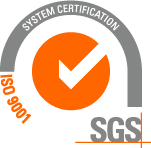Air conditioner makers battle for Vietnam's red-hot market
Ascendant middle class gravitates toward high-performance models
Air conditioner manufacturers around the world are locking horns in Vietnam, whose market has become the second largest in Southeast Asia as rapid economic growth supports a burgeoning middle class.
Air conditioner manufacturers around the world are locking horns in Vietnam, whose market has become the second largest in Southeast Asia as rapid economic growth supports a burgeoning middle class.
Vietnam's market for the cooling systems ranked as Asia's eighth largest in 2011, excluding Japan and China, with about 660,000 units sold. But the country surpassed Thailand in 2015, and sales of 1.98 million units in 2016 lifted the nation into third behind India and Indonesia.
The Japan Refrigeration and Air Conditioning Industry Association reported that the global market grew 2.5% from 2011 to 2016, but surged 34.3% in Asia over that span, with Vietnamese sales tripling to 150 billion yen ($1.35 billion at current rates).
Rising wealth in Vietnam has fueled steep expansion in the air conditioner market. The country's economy has been growing at the fastest clip in Southeast Asia, around 7% a year. Refrigerators and washing machines are usually the first white goods to catch on in a developing market, with a sharp increase in demand for air conditioners once gross domestic product per capita hits $3,000.
Vietnam's per-capita GDP totaled about $2,300 in 2017, but topped $4,000 in Ho Chi Minh City and reached the upper $3,000 range in Hanoi. Demand is booming among first-time buyers in major cities and other locations.
Companies like Daikin Industries have taken notice and are working to boost local production. The Japanese business invested 10 billion yen to build a factory with an annual output of 1 million units that opened Friday on the outskirts of Hanoi. It will use know-how cultivated in India to introduce a cutting-edge production line that reduces inventory and shortens wait times. The company also operates a Thai plant with an annual output of 2.5 million units and a Malaysian facility that can produce 1 million units.
The Hanoi plant also boasts a training center to prepare up to 10,000 local technicians for production, installation and maintenance by 2020. Some of the technicians likely will be sent to Japan. The company plans to accept most of its trainees from local retailers, but is also exploring partnerships with local technical colleges to secure more top talent.
The factory modularizes major tasks such as welding and assembly with uniform work stations that can be brought online simply by attaching such lines as a power source. This allows production lines to be quickly reorganized like Lego blocks, improving the response to swings in air conditioner demand tied to the weather. Daikin opened a megafactory in Texas last May that uses the same system.
The plant also will tap "internet of things" technology by using sensors to check work speeds in real time and detect faulty equipment or delays. Daikin wants to introduce this system to its production facilities worldwide, and likely will use technicians trained in Vietnam to do so.
Daikin plans to improve its sales and service network as well, roughly tripling its number of dealers to 2,000 and repair centers to 25 by 2020. The company aims to double Vietnamese sales to 100 billion yen in fiscal 2022 from 50 billion in fiscal 2017.
In the air conditioner industry, especially in developed countries, companies are often judged on how well they provide after-sales service such as repairs. Daikin looks to invest 10 billion yen in 2020 to build a training center and showroom as part of its new local headquarters in Ho Chi Minh City. The company wants the facility to serve as a center for exporting talent in maintenance and other services.
Daikin expects to increase sales in Asia, excluding China, by 9% for the year ending in March to 274 billion yen. That accounts for only a little over 10% of its air conditioning business, but the company has labeled the region a key market along with the U.S.
"Air conditioning demand will be robust in the long term given the growth of middle-class households," Daikin President and CEO Masanori Togawa said. "We will expand our sales network in both cities and local areas as well as increase supply ahead of our competitors."
Other Asian companies are following suit. South Korea's LG Electronics has invested $1.5 billion to raise production by 2028 at a factory in the northern city of Haiphong that makes displays and air conditioners. Japan's Panasonicis increasing output at its Malaysian factory to expand supply to Vietnam.
Daikin and Panasonic each control about 25% of Vietnam's air conditioner market, followed by LG, Samsung Electronics of South Korea and Sweden's Electrolux. The popularity of Japanese brands is rising in Vietnam as consumers increasingly value energy efficiency and performance over low prices.
Daikin has continued sales growth over 30% in Vietnam thanks largely to the release of highly efficient air conditioner models with inverter technology, which controls the speed of the compressor motor so as to continuously regulate the temperature. Though the price of a unit with an inverter is 12.7 million dong ($558) -- 30% higher than competitor LG and 80% more than Chinese products -- the manager of a local electronics store in Hanoi said Daikin was still the shop's top seller.
A 64-year-old man in Hanoi said he recently bought two Daikin air conditioners because his LG unit was too loud. He researched the quietest and most energy-efficient models on social networking sites beforehand.
With a population of 93 million, among the highest in the Association of Southeast Asian Nations, Vietnam is seen as having a more promising air conditioner market than Malaysia and Thailand, whose markets are reaching maturity. With only about 17% of Vietnamese households owning an air conditioner last year, according to British research firm Euromonitor International, the market is expected to grow further.


